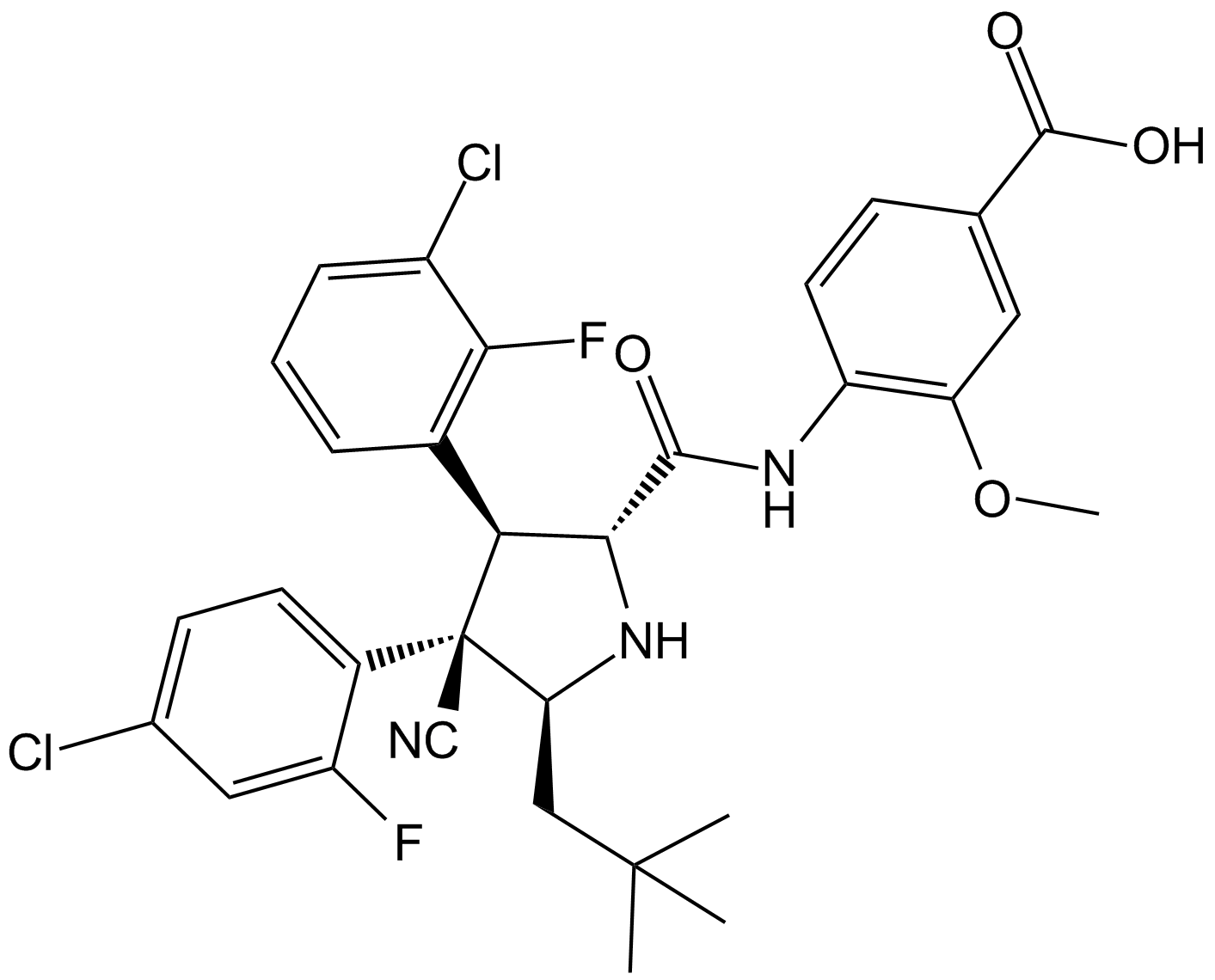RG7388 (Synonyms: RG 7388; RG-7388; ldasanutlin; Ro 5503781) |
| Catalog No.GC11594 |
An inhibitor of the MDM2-p53 interaction
Products are for research use only. Not for human use. We do not sell to patients.

Cas No.: 1229705-06-9
Sample solution is provided at 25 µL, 10mM.
RG7388 is a second generation clinical MDM2 inhibitor with superior potency and selectivity.
It is a highly potent pyrrolidine compound. RG7388 is more potent and selective than RG7112. In human cancer cell lines, IC50 value of RG7388 in HTRF binding assays is 6 nM and IC50 value of RG7388 in MTT proliferation assays is 0.03μM. [1]
In human cancer cell lines, RG7388 blocks p53−MDM2 binding and effectively activates the p53 pathway, leading to cell cycle arrest and/or apoptosis in cell lines expressing wild-type p53 and tumor growth inhibition or regression of osteosarcoma xenografts in nude mice. RG7388 is undergoing clinical investigation in solid and hematological tumors. [1]
In rhabdomyosarcoma xenografts mice, RG7388 increased the activity of Ionizing radiation (XRT) in both rhabdomyosarcoma models and did not increasing local XRT-induced skin toxicity. Changes in TP53-responsive genes were consistent with the synergistic activity of RG7388 and XRT in the Rh18 model. [2]
RG7388 GI50 concentrations of wt p53 was a >200-fold difference versus mutant cell lines. Comparing with MYCN- cells, Tet21N MYCN+ cells were more sensitive to RG7388. In five p53-wt neuroblastoma cell lines, combining use of RG7388 with cisplatin, topotecan, doxorubicin, busulfan and temozolomide were synergistic led to increased apoptosis and higher caspase-3/7 activity. RG7388 is highly potent against p53-wt neuroblastoma cells, and strongly supports its further evaluation as a novel therapy for patients with high-risk neuroblastoma and wt p53 to potentially improve survival and/or reduce toxicity. [3]
References:
1.Ding Q, Zhang Z, Liu JJ et al. Discovery of RG7388, a potent and selective p53-MDM2 inhibitor in clinical development. J Med Chem. 2013 Jul 25;56(14):5979-83.
2.Phelps D, Bondra K, Seum S et al. Inhibition of MDM2 by RG7388 confers hypersensitivity to X-radiation in xenograft models of childhood sarcoma. Pediatr Blood Cancer. 2015 Apr 1. doi: 10.1002/pbc.25465.
3.Chen L, Rousseau RF, Middleton SA et al. Pre-clinical evaluation of the MDM2-p53 antagonist RG7388 alone and in combination with chemotherapy in neuroblastoma. Oncotarget. 2015 Apr 30;6(12):10207-21.
Average Rating: 5 (Based on Reviews and 30 reference(s) in Google Scholar.)
GLPBIO products are for RESEARCH USE ONLY. Please make sure your review or question is research based.
Required fields are marked with *




















